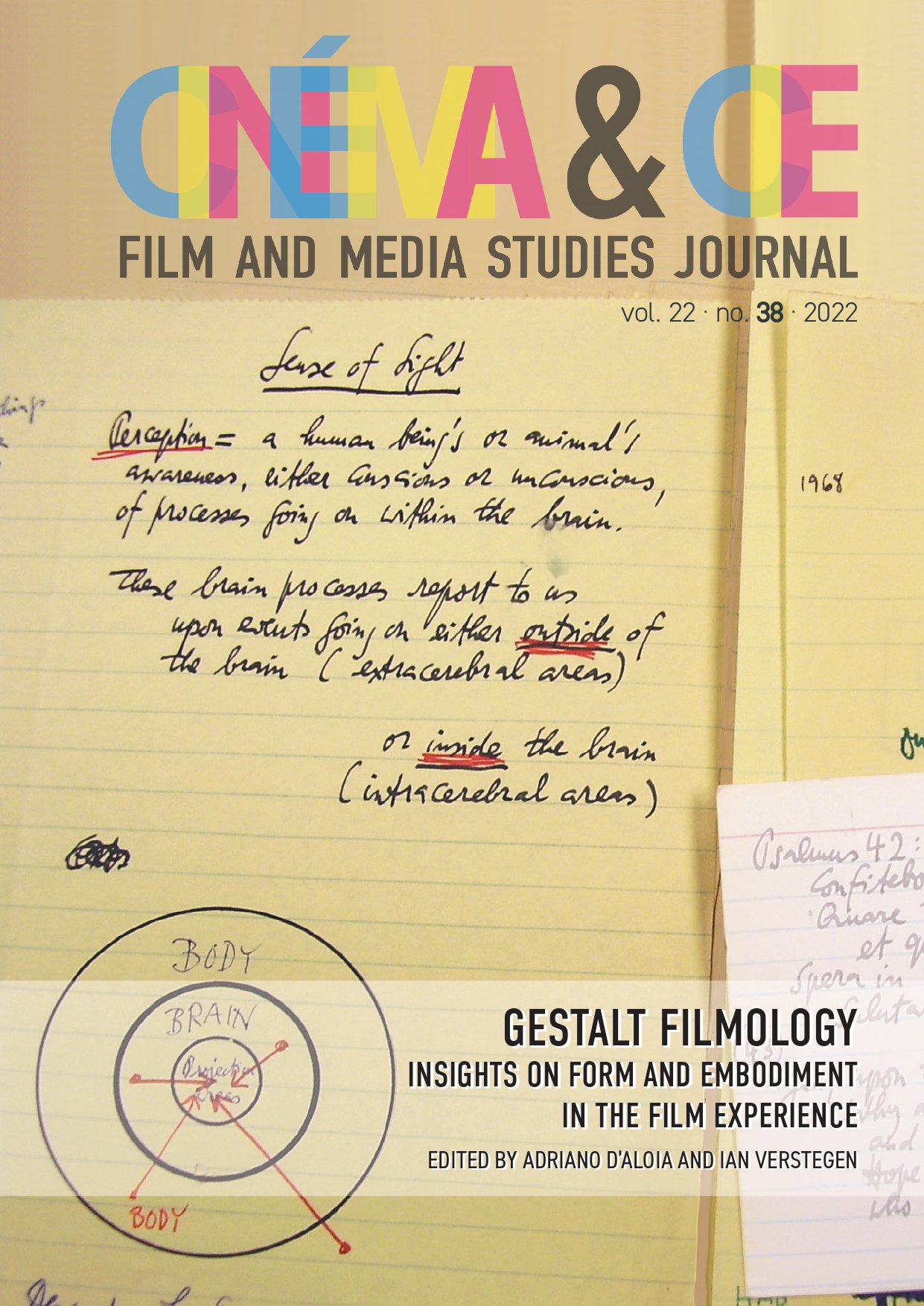Rhythm Beyond the Cinematic Medium/The Pixel Beyond the Movie Theatre
DOI:
https://doi.org/10.54103/2036-461X/17923Keywords:
rhythm, shimmer, pixel, ethics, digital hostilityAbstract
In The Affect Theory Reader, Gregory J. Seigworth and Melissa Gregg write about Roland Barthes’s splendid notion of ‘shimmer’: an ‘exhaustively nuanced space’ that may be inventoried as patho-logies (by which to contemplate pathos) of bodies (human and nonhuman). In Alex Garland’s 2018 film Annihilation, a refracting effect — the Shimmer — which has appeared around a lighthouse and is slowly spreading outwards, is being studied. Military groups have entered the Shimmer never to return. A group of female scientists — of which Lena (Natalie Portman), a biologist, is one — enter the Shimmer and begin to inventory the strange organic duplicates of form within it. These organic structures, while extraordinarily nuanced, are also patho-logies of organic life as they are refracted by the Shimmer. This article will consider the ‘exhaustively nuanced space’ of cinema and its patho-logies via the conditions of the rhythm of the pixel in cinema, and beyond, in social media. While cinema, as well as social media, can be conceived as an affective experience, this essay will consider how the rhythm of the pixel as an energetic relation allows for an ethics to arise in the relation between the media text and the spectator/operator. In an examination of the rhythm of the pixel beyond the cinematic medium, I consider the energetic ‘becoming’ of the spectator/operator and the digital image (text and image in social media) as they act in relation. In an examination of the rhythm of the pixel beyond the movie theatre, I consider the infinite intensities in the aisthetic encounter of body and text/image in social media and its correlation to the politics of a mass-art. My hope is that in the ‘exhaustively nuanced space’ of rhythm beyond the cinematic medium and the pixel beyond the movie theatre, what may be found is patho-logies conjured by affective intensities and their connectives whereby digital interactions may no longer be refracted by the passions of divisive debate, but by an ethics of care, compassion, and empathy.
Downloads
Published
How to Cite
Issue
Section
License
Copyright (c) 2022 Sharon Jane Mee

This work is licensed under a Creative Commons Attribution 4.0 International License.





